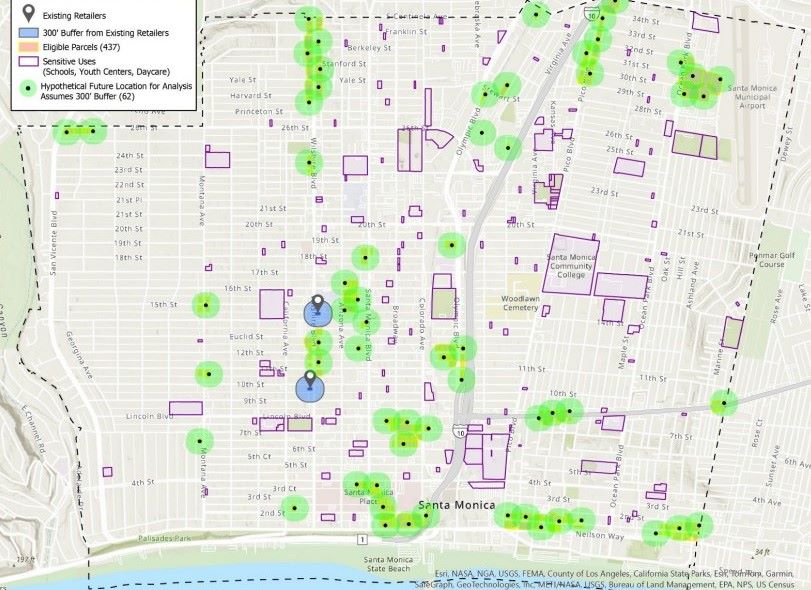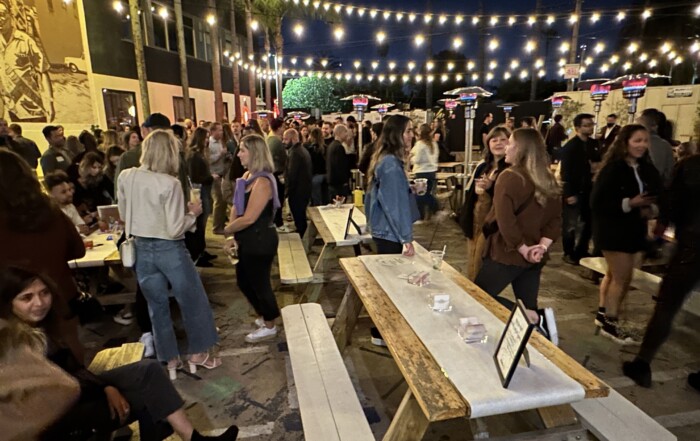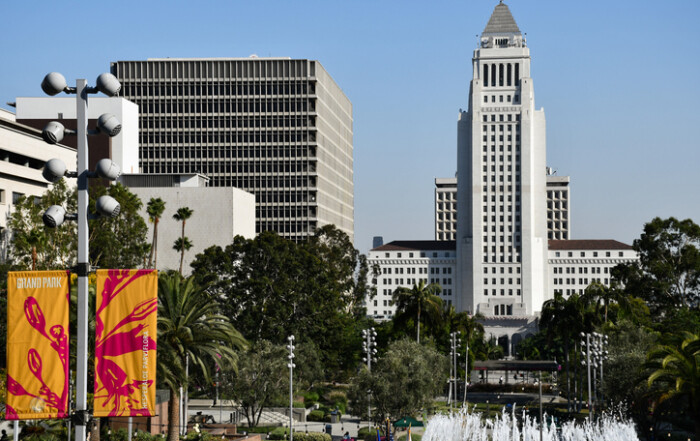On Tuesday evening, the Santa Monica city council provided direction to city staff on parameters to develop a cannabis equity program in the city. The program is intended to help communities most impacted by the criminalization of marijuana start their businesses in Santa Monica.
After some discussion, the council directed staff to work on a program requiring cannabis businesses to be located at least 600 feet from areas like schools and daycares while also being 300 feet away from other cannabis businesses and being limited to one per block.
One of the major pieces this program would institute is a selection process for adult-use cannabis retail licenses, which would allow an equity component to be instituted in the permit process. The initial proposal from city staff is to create a selection process with minimal criteria for equity applicants followed by a lottery process to award permits.
Councilmember Caroline Torosis made her support for a lottery process known for a different reason: she explained that the lottery process is far less susceptible to litigation than more selective processes like Requests for Proposal (RFP).
“There’s a lot of actors in this space that will prop up the equity applicants,” Torosis said. “Private venture-backed firms will come in and back the equity applicants, but when you look at who’s really benefitting, it’s not that applicant.”
However, city staff noted that a selection process of some kind was needed to ensure that it benefitted the equity applicants the city is looking to assist with this program. A filtering criteria leading to a lottery process was the best way staff could a selection process while trying to tip-toe around litigation.
“We didn’t really see more options than that,” Santa Monica Planning Manager Jing Yeo said. “I think every city has been grappling with that issue and there’s no magic bullet answer.”
The extent of the limit on the number of businesses in the city was also a key topic, as city staff found that similar programs instituted without caps had problems enforcing equity policies because of an oversaturation of businesses. Peer cities in California that run cannabis equity programs including Los Angeles, Palm Springs, and Oakland were used as reference points to understand how to implement a program in Santa Monica.
However, at its previous discussion of the matter last June, the city council directed that no cap on permits be set. Hence, zoning regulations such as buffering around sensitive use areas like schools, youth centers, daycares, and other cannabis businesses were the alternatives presented by city staff.
City staff used state-required 600’ buffers between cannabis businesses and sensitive uses but showed separate projections of eligible parcels for cannabis businesses with buffers at 300, 600, and 900 feet from other cannabis businesses. Additionally, the previous council direction had staff implement a separate mechanism to control the number of businesses, and the proposal was to limit the number allowed per block.
While the data is hypothetical according to city staff, there could be a potential of anywhere from 29 businesses with the 900-foot buffer to 62 with the 300-foot buffer in Santa Monica, including the two currently open in city borders.
Councilmember Christine Parra wanted to know more specifics on the policies of the other cities, particularly the number of cannabis businesses in each of the surveyed peer cities and their locations. Those numbers sit anywhere from two in smaller cities like Culver City to 192 in Los Angeles.
Members of the council agreed that having the least restrictive buffer as possible was ideal to allow the most potential sites to be available. Vice Mayor Lana Negrete noted that the 62 sites will not be the actual total that will be available, as many of those outlined sites may have other issues that prevent them from being used.
“We want to create the opportunity, but we can’t do that if we make it so hard,” Negrete said of the process.
Development of the Cannabis Equity program is expected to begin by December 2024 following an assessment but the time it is estimated to take to develop the program sits between eight and 20 months.
Cannabis Equity Map from the City Staff Report.
Stay informed. Sign up for The Westside Voice Newsletter
By clicking submit, you agree to share your email address with Westside Voice. We do not sell or share your information with anyone.








